
Boraginaceae, the borage or forget-me-notfamily, includes about 2,000 species of shrubs, trees, and herbs in 146 to 156 genera with a worldwide distribution.
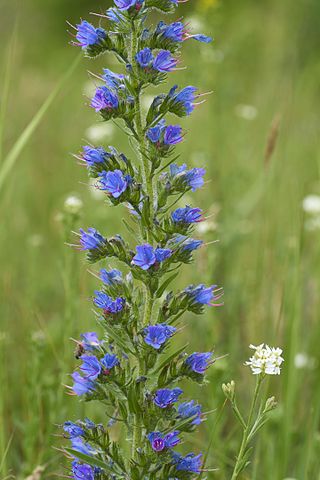
Echium vulgare, known as viper's bugloss and blueweed, is a species of flowering plant in the borage family Boraginaceae. It is native to most of Europe and western and central Asia and it occurs as an introduced species in north-eastern North America, south-western South America and the South and North Island of New Zealand. The plant root was used in ancient times as a treatment for snake or viper bites. If eaten, the plant is toxic to horses and cattle through the accumulation of pyrrolizidine alkaloids in the liver.
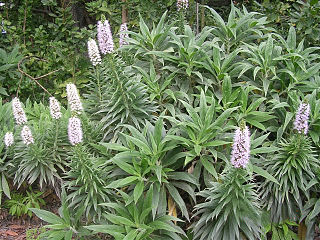
Echium virescens is a flowering plant in the genus Echium. It is endemic to the island of Tenerife, mainly in Macizo de Anaga and the Orotava Valley. It grows in forests and on lower south slopes of the island.

Echium is a genus of flowering plants in the family Boraginaceae that contains about 70 species and several subspecies.

Echium wildpretii is a species of flowering plant in the family Boraginaceae. It is an herbaceous biennial plant that grows up to 3 m (10 ft) in height. The species is endemic to the Canary Islands, and is found mainly in the national park surrounding Mount Teide in Tenerife. The subspecies E. wildpretii subsp. trichosiphon occurs at high altitudes on the island of La Palma. The common names are tower of jewels, red bugloss, Tenerife bugloss or Mount Teide bugloss.
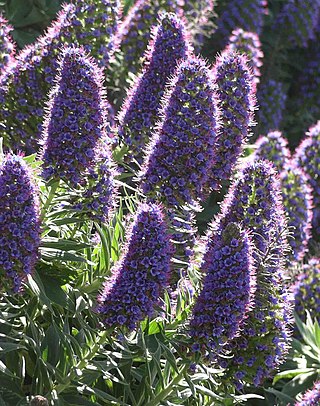
Echium candicans, the 'Pride of Madeira', is a species of flowering plant in the family Boraginaceae, and genus Echium, native to the island of Madeira. It is a large herbaceous perennial subshrub, growing to 1.5–2.5 m.

The Jardim Botânico Nacional Grandvaux Barbosa is the only botanical garden in Cape Verde. The garden is located in São Jorge, in the middle of the island Santiago. Its collection focuses on endemic and native plants of Cape Verde.

Echium pininana, commonly known as the tree echium, pine echium, giant viper's-bugloss, or tower of jewels, is a species of flowering plant in the borage family Boraginaceae. It is endemic to the Canary Islands, where it is restricted to the island of La Palma. Echium pininana is an endangered species, and is listed in Appendix I to, and is therefore protected under, the Convention on the Conservation of European Wildlife and Natural Habitats. The specific epithet pininana is Latin for "small pine", though E. pininana is neither closely related to the pine, nor does it resemble that plant.
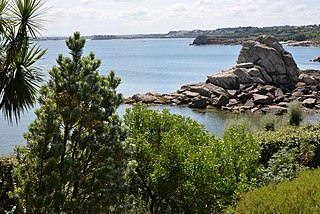
The Jardin Exotique de Roscoff is a botanical garden located in Roscoff, Finistère, in the region of Brittany, France. It is open daily; an admission fee is charged.
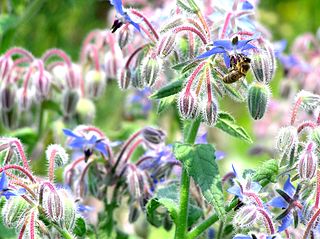
Boraginoideae is a subfamily of the plant family Boraginaceae s.s, with about 42 genera. That family is defined in a much broader sense in the Angiosperm Phylogeny Group (APG) system of classification for flowering plants. The APG has not specified any subfamilial structure within Boraginaceae s.l.

Dendrobium thyrsiflorum is a species of orchid, commonly called the pinecone-like raceme dendrobium. It is native to the Himalayas as well as to the mountains of northern Indochina.

Echium wildpretii subsp. trichosiphon is a species of Echium that is found high up in the area of La Caldera de Taburiente on the Canary Island of La Palma. Like its sister plant on Tenerife, this plant forms a large rosette of silvery leaves which eventually give rise to tall spikes of bright pink flowers. The plant is biennial and dies after flowering. This plant can be grown in gardens, but requires good drainage and fairly mild conditions. The plant hates water falling in the centre of the rosette and will often rot in such conditions.
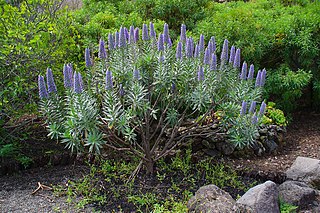
Echium webbii is a species of flowering plants of the family Boraginaceae. It is endemic to the Canary Islands, where it is restricted to the island of La Palma. The species was first described by Auguste-Henri de Coincy. The specific name webbii refers to botanist Philip Barker Webb.

Bason Botanic Gardens are located in Whanganui in the Manawatū District of New Zealand. They have been rated as a Garden of Significance by the New Zealand Gardens Trust and offer six themed areas, including one of the most extensive public-garden orchid collections in the country, and the conservatory architecture is considered unique. Much of the development work is conducted by the Bason Botanic Gardens Trust, which collaborates with the City Council.
Hexapterella is a genus of flowering plants in the Burmanniaceae, first described as a genus in 1903. It is native to northern South America and to the Island of Trinidad.

Echium aculeatum is a species of flowering plant of the family Boraginaceae. It is endemic to the Canary Islands, where it occurs on the islands El Hierro, La Palma, La Gomera and Tenerife. Its name in Spanish is ajinajo.

Echium nervosum is a species of flowering plants of the family Boraginaceae. It is endemic to Madeira. The specific name nervosum is from Latin and means "veined".

Echium judaeum, commonly known as the Judean viper's bugloss, is an annual plant endemic to southern Lebanon, southern Syria, Palestine and Israel, of the Boraginaceae family, and which, like other herbaceous flowering plants of the same genus, derives its name from the style's resemblance to the forked-tongue of a serpent during the flower's pistillate-stage of development.
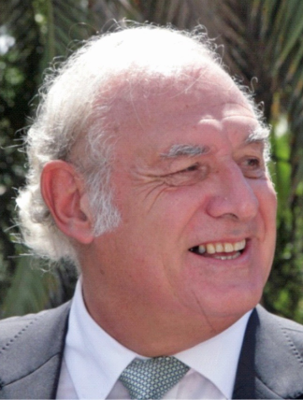
David Bramwell MBE was an English botanist and taxonomist, director of the Jardín Botánico Canario Viera y Clavijo, Gran Canaria (1974–2012), and active in the conservation of insular floras.



















